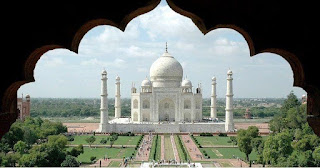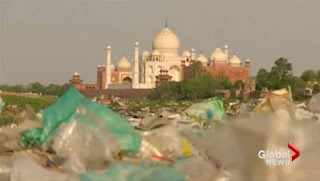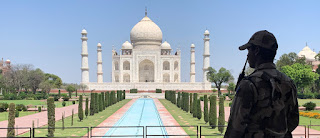factors affecting taj mahal: Pollution of the Taj Mahal
factors affecting taj mahal The Taj Mahal is often considered the jewel of Muslim architecture in India and is one of the world's universally acclaimed creations. The Taj Mahal is considered to be the greatest architectural achievement in the entire range of Indo-Islamic structures built in the Indian subcontinent. It is recognized as an architectural beauty that is a pattern combining concrete and video. It also includes arches and domes that enhance the aesthetic aspect of the entire structure. But for many years, the Taj Mahal has been turning yellow mainly due to air pollution, stone malfunction.
factors affecting taj mahal
How beautiful is the Taj Mahal?
There are no words to describe such a man-made wonder. The Mughal emperor Shah Jahan employed the best architects and builders, as well as employing thousands of workers, including sculptors, layers of bricks, calligraphers, and skilled workers in gemstone inlay. Important components such as lapis lazuli (Afghanistan), jade (China), coral (Arabia), and Manik (Sri Lanka) turquoise (Tibet) were used extensively to beautify the monument. But most of the precious stones were already looted. In addition, the milky white marble was brought from Makrana mines from Rajasthan. The 144-foot-high main dome built of white marble-covered brick masonry weighs several thousand tons. The Taj was also the most ambitious project undertaken by the Mughal emperors.
What are the causes of pollution in the Taj Mahal?
Air pollution
Agra and its neighboring areas have a high rate of pollution which is due to automobile discharge, municipal waste, burning of dung, and other types of waste. These wastes released large amounts of Particulate Matter (PM) into the atmosphere, causing severe environmental damage. It should be noted that about 2000 metric tonnes of garbage was being dumped every day in Agra. Burning of this waste causes a lot of damage to the ecosystem. Dust and carbon-rich particles emitted during the burning of fossil fuels have been the primary cause of the decomposition of the Taj Mahal. According to various reports, PMs are 2 times more than the national standard (40) and more than 8 times the WHO guidelines.
Due to nature
The Taj Mahal was built by the Mughal Emperor Shah Jahan in 1632 for the tomb of his favorite wife Mumtaz Mahal. But it is now 386 years old because after such a long time there will be some discoloration. Marble is not present in pure form, hence the marble in the Taj Mahal is composed of other mineral components. But such mineral assemblages can succumb to oxidation without proper protection. Oxidation causes a chemical reaction with the outer layers leading to the breakdown of these minerals, resulting in black and brown marks on the marble structure. In addition, thunderstorms and rains also affect the monument, which gradually takes it down causing cracks and peeling along the outer surface.
Yamuna River pollution
Pollution in the Yamuna has also fueled a growing number of pests, whose emissions turned the Taj Mahal an ugly yellow. In addition, the polluted river has eroded banks near the foundation of the monument. The Yamuna has become polluted due to various factors and has become a dumping ground for industrial and domestic waste. New Delhi drains about 60 percent of its waste into the river. Although waste treatment plants have been set up to contain chemicals from industries, it has not yielded positive results. Since, many factories continue to discharge chromium, arsenic, and cadmium. It is not only the poor drainage system of the industrial area, saturated landfills, human settlements around the river but also damages the river. This waste not only pollutes the Yamuna, but it also tarnishes the image of one of the most beautiful monuments in the world.effects of air pollution on taj mahal
Other environmental issues
In the name of development, the Taj Mahal has been damaged due to the continuous feeling of trees throughout Agra. Agra is in a semi-arid region, and temperatures in the region can reach around 48 ° C. Due to the absence of trees, the heat waves that run regularly along the plains of North India are moving fast to wander any physical resistance that stands on its way. For the past two decades, the Taj Mahal has a highly abrasive effect of dust as well as hot winds. In addition, the Taj Heritage Corridor - a riverfront project consisting of food plazas and malls - was planned between the Agra Fort and the Taj Mahal. But fortunately, the project was sheltered following orders from the Supreme Court, as it posed a potential threat to the monument. According to the reports of the Archaeological Survey of India, the sand deposited in the reconstructed river water can destroy the marble surface during a sand storm.




Comments
Post a Comment